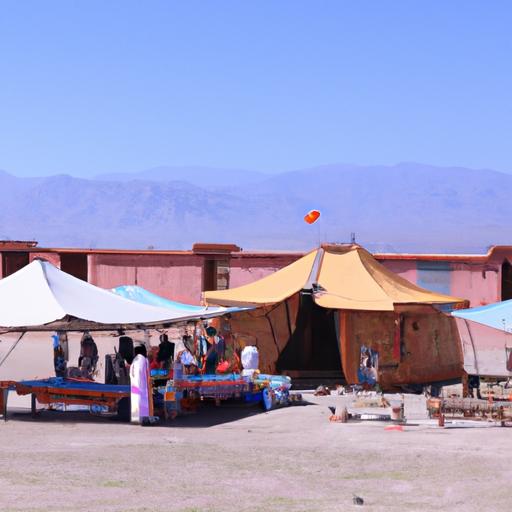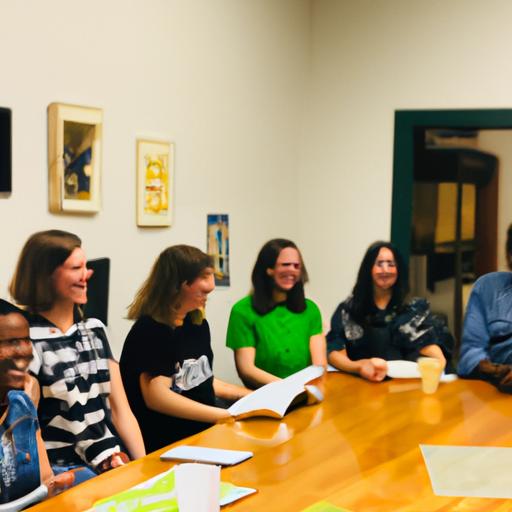Exploring the Silk Road and Cultural Exchange History Fair

Introduction
The Silk Road, a legendary network of ancient trade routes, weaves together tales of adventure, discovery, and cultural exchange. As history unfolded, these pathways became conduits for the exchange of goods, ideas, and knowledge between East and West. Today, we delve into the captivating world of the Silk Road and its profound impact on shaping civilizations through the ages. Moreover, we will embark on an exciting journey through time as we introduce you to the silk road and cultural exchange history fair.
A Brief Overview of the Silk Road
Imagine embarking on a daring expedition, traversing vast deserts, rugged mountain ranges, and treacherous terrains. The Silk Road, originating from ancient China, spanned over 6,000 miles, connecting civilizations from China to the Mediterranean Sea. This intricate web of trade routes facilitated the exchange of silk, spices, precious metals, and other commodities, fostering economic growth and cultural prosperity.
The Importance of Cultural Exchange in History
Cultural exchange serves as a bridge, uniting diverse societies and fostering mutual understanding. Throughout history, cultural exchange has played a pivotal role in shaping civilizations. The Silk Road acted as a catalyst for this exchange, enabling the transmission of ideas, philosophies, religions, and artistic expressions across vast distances. It became a meeting point for merchants, scholars, explorers, and diplomats, facilitating the blending of cultures and the birth of new traditions.
Introduction to the Silk Road and Cultural Exchange History Fair
Nowadays, we have the opportunity to celebrate the richness and vibrancy of the Silk Road’s cultural heritage through the Silk Road and Cultural Exchange History Fair. This unique event brings together enthusiasts, historians, and curious minds alike, offering a captivating glimpse into the past. At the fair, you can immerse yourself in interactive exhibits, witness captivating performances, and engage with experts who will guide you through the wonders of this ancient trade route.
As we embark on this virtual journey through time, let us unfold the mysteries of the Silk Road, unravel its impact on cultural diversity, and discover the significance of the Silk Road and Cultural Exchange History Fair. Join me as we delve into the intricate tapestry of history, connecting the threads of the past to the present.
Next up: History of the Silk Road
History of the Silk Road
Origins and Development of the Silk Road
The Silk Road’s origins date back over 2,000 years ago, during the Han Dynasty in China. Initially, the route emerged as a means to transport silk, a highly prized commodity at the time, to eager markets in the West. However, its significance soon transcended the realm of trade, evolving into a complex network of routes that facilitated the exchange of ideas, technologies, and cultures.
As the Silk Road expanded, it branched out into various interconnected paths, with major arteries stretching from Chang’an (modern-day Xi’an) in China to destinations such as Samarkand, Constantinople (now Istanbul), and Rome. These routes traversed diverse landscapes, including deserts, mountains, and grasslands, challenging the resilience of the traders and travelers who embarked on these arduous journeys.
Trade Routes and Connections
The Silk Road was not a singular road but a vast network of interconnected trade routes. Along these routes, bustling market towns and trading posts sprung up, serving as pivotal hubs for commerce and cultural exchange. Caravans laden with silk, spices, porcelain, and precious metals journeyed through perilous terrains, forging connections between the East and the West.
The Silk Road encompassed multiple branches, such as the northern, central, and southern routes. The northern route, known as the “Northern Silk Road,” passed through the Eurasian Steppe, linking China to Central Asia and beyond. The central route, the most well-known and frequently traveled, wound through the Taklamakan Desert, connecting China with the oasis cities of Central Asia. Meanwhile, the southern route navigated the treacherous terrains of the Tibetan Plateau, facilitating trade between China, India, and the Arabian Peninsula.
Significance of the Silk Road in Promoting Cultural Exchange
Beyond the exchange of goods, the Silk Road acted as a conduit for the exchange of diverse cultures, ideologies, and knowledge. It fostered a remarkable fusion of traditions, languages, religions, and artistic styles. Buddhist monks, Islamic scholars, and European merchants all traversed the Silk Road, disseminating their beliefs, philosophies, and innovations to distant lands.
The Silk Road’s significance in promoting cultural exchange cannot be overstated. It played a pivotal role in the spread of Buddhism from India to China and beyond. It facilitated the introduction of papermaking, gunpowder, and compass technology from China to the West, revolutionizing societies. Artistic influences, such as the incorporation of Persian motifs in Chinese ceramics or the integration of Chinese techniques in Byzantine textiles, exemplify the cross-cultural pollination that occurred along this ancient trade route.
Join me in the next section as we delve deeper into the fascinating realm of cultural exchange on the Silk Road.
Next up: Cultural Exchange on the Silk Road
Cultural Exchange on the Silk Road
The Silk Road served as a bustling hub of cultural exchange, where ideas flowed freely, and civilizations intertwined. Let’s explore the diverse aspects of this exchange that shaped the world as we know it.
A. Exchange of Goods, Ideas, and Technologies
The Silk Road was not just a pathway for the trade of physical commodities; it was a conduit for the exchange of ideas, philosophies, and technologies. Merchants from different regions brought with them unique goods, sparking curiosity and inspiring innovation. The transfer of knowledge and inventions across vast distances propelled advancements in agriculture, astronomy, medicine, and more. From the innovative papermaking techniques of China to the intricate metalworking methods of Persia, the Silk Road became a melting pot of innovation and progress.
B. Influence of the Silk Road on Art, Religion, and Language
Artistic expressions were greatly influenced by the cultural exchange along the Silk Road. As traders and travelers traversed the route, they carried with them artistic styles, techniques, and motifs, leading to the fusion of different artistic traditions. Buddhist sculptures from India found their way to China, merging with local artistic practices to create a unique blend of styles. Similarly, Persian influences can be seen in the intricate patterns of Chinese ceramics, reflecting the intermingling of cultures.
Religion also played a significant role in cultural exchange. Buddhism, originating in India, spread along the Silk Road, reaching China and beyond. The exchange of religious ideas and practices fostered the development of new sects and contributed to the religious diversity we see today.
Language, too, experienced a transformation as a result of Silk Road interactions. Trade and cultural exchange necessitated communication, leading to the development of lingua francas such as Sogdian and later, Arabic. These languages served as mediums for cultural exchange, enabling merchants and diplomats to navigate the diverse regions along the Silk Road.
C. Examples of Cultural Exchange along the Silk Road
The Silk Road was a melting pot of cultures, resulting in a myriad of fascinating exchanges. One notable example is the spread of the Chinese art of silk production to the West. The coveted silk fabric was not only a luxurious commodity but also a symbol of status and wealth. On the other hand, the West introduced Central Asia and China to new crops, including grapes and walnuts, which enriched their agricultural practices.
Another remarkable example is the influence of Indian mathematics and astronomy on Islamic scholars. Through translations and interactions, Indian numerical systems, including the concept of zero, were introduced to the Islamic world, revolutionizing mathematics and paving the way for future scientific advancements.
As we explore the cultural exchange along the Silk Road, we witness the interconnectedness of civilizations, the transfer of knowledge, and the birth of new ideas. Join me as we continue our journey, uncovering further marvels of this ancient trade route.
Next up: The Silk Road and Cultural Diversity
The Silk Road and Cultural Diversity
Impact of the Silk Road on Diverse Civilizations
The Silk Road acted as a cultural highway, connecting civilizations and leaving an indelible mark on their development. As traders, explorers, and nomads traversed the Silk Road, they brought with them not only goods but also a wealth of ideas, customs, and beliefs. The impact of this exchange was profound, as it fostered a cross-pollination of cultures, sparking innovation, and transforming societies.
From the Chinese invention of silk to the introduction of Buddhism in Central Asia and the Middle East, the Silk Road facilitated the diffusion of knowledge and ideas. The exchange of goods and technologies like papermaking and gunpowder revolutionized entire regions, leading to advancements in art, science, and governance. The Silk Road acted as a conduit for cultural diffusion, fueling intellectual curiosity and promoting the growth of civilizations.
Role of the Silk Road in Shaping Multicultural Societies
The Silk Road played a pivotal role in facilitating the rise of multicultural societies. As merchants established trading posts and settlements along the route, diverse communities began to flourish. People from different ethnicities, backgrounds, and beliefs coexisted and interacted, forming unique and vibrant cultural melting pots.
Cities like Samarkand, Kashgar, and Dunhuang became thriving cultural crossroads, attracting scholars, artists, and craftsmen from all corners of the world. This cultural intermingling resulted in the blending of traditions, languages, and art forms, giving birth to new hybrid cultures. The Silk Road, therefore, acted as a catalyst for the development of multicultural societies, where diversity was embraced and celebrated.
Cultural Diversity as a Result of Silk Road Interactions
The interactions along the Silk Road led to the emergence of a diverse tapestry of cultures. From the intricate Buddhist cave paintings of Dunhuang to the magnificent Islamic architecture of Uzbekistan, the Silk Road’s influence is evident in the rich tapestry of artistic, architectural, and culinary traditions that span across regions.
Moreover, the Silk Road gave birth to a multitude of languages and dialects, resulting in linguistic diversity. It facilitated the exchange of literature, philosophy, and religious texts, shaping the intellectual landscape of civilizations. This cultural diversity continues to resonate in the present day, reminding us of the far-reaching impact of the Silk Road on the world’s heritage.
As we explore the profound influence of the Silk Road on cultural diversity, we come to appreciate the importance of preserving and cherishing our shared human heritage. The Silk Road and Cultural Exchange History Fair serve as a reminder of the beauty and richness of this historical legacy, showcasing the fascinating tapestry of cultures that emerged from this ancient trade route.
Next up: The Importance of Cultural Exchange History Fairs
The Importance of Cultural Exchange History Fairs
Cultural Exchange History Fairs hold immense significance in promoting a deeper understanding and appreciation of diverse cultures that have thrived along the Silk Road. These fairs act as vibrant platforms that bring together people from various backgrounds, fostering a sense of unity and respect. Let’s explore the key reasons why these fairs are vital in celebrating our shared heritage.
A. Promoting Understanding and Appreciation of Diverse Cultures
Cultural Exchange History Fairs provide a unique opportunity to delve into the rich tapestry of cultures that have shaped the Silk Road. By showcasing the traditions, customs, and beliefs of different civilizations, these fairs encourage visitors to embrace diversity and broaden their perspectives. Through engaging exhibits, interactive displays, and informative presentations, participants gain a deeper understanding of the remarkable contributions made by various cultures along the Silk Road.
B. Showcasing Historical Artifacts and Cultural Practices
One of the highlights of Cultural Exchange History Fairs is the exhibition of historical artifacts that offer a tangible connection to the past. These carefully curated displays allow attendees to witness firsthand the craftsmanship, ingenuity, and artistic expressions of ancient civilizations. From intricately woven textiles to ornate pottery and exquisite jewelry, these artifacts offer a glimpse into the lives and cultural achievements of the people who traversed the Silk Road.
Moreover, Cultural Exchange History Fairs also showcase cultural practices through captivating performances, demonstrations, and workshops. Visitors can witness traditional dances, musical performances, martial arts displays, and culinary showcases, immersing themselves in the sights, sounds, and flavors of diverse cultures. This interactive experience fosters a deeper appreciation for the beauty and significance of cultural heritage.
C. Encouraging Dialogue and Learning from Different Perspectives
Cultural Exchange History Fairs serve as a platform for dialogue, encouraging individuals to engage in meaningful conversations about history, culture, and heritage. Through workshops, lectures, and panel discussions, participants have the opportunity to learn from experts, scholars, and enthusiasts who share their insights and knowledge. By embracing different perspectives, we can broaden our horizons, challenge our assumptions, and foster a more inclusive and interconnected world.
In conclusion, Cultural Exchange History Fairs play a vital role in promoting understanding, showcasing the richness of diverse cultures, and encouraging dialogue. These fairs provide a platform for individuals to explore, appreciate, and celebrate the cultural heritage that thrived along the Silk Road. By attending such fairs, we embark on a journey of discovery, connecting with the past to shape a more culturally diverse and interconnected future.
Next up: Conclusion
Conclusion
The Silk Road and Cultural Exchange History Fair provide us with a captivating window into the past, reminding us of the profound impact of cultural exchange on our world. Through the Silk Road, civilizations flourished, ideas flourished, and diverse cultures intertwined, leaving an indelible mark on our collective heritage.
In this journey through time, we have explored the origins and development of the Silk Road, marveling at its vast trade routes and connections that spanned continents. We have witnessed the power of cultural exchange as goods, ideas, and technologies flowed freely, shaping art, religion, and language along the way. The Silk Road has truly been a catalyst for cultural diversity, fostering multicultural societies that celebrate the richness of human experience.
The Silk Road and Cultural Exchange History Fair play a crucial role in preserving and promoting understanding of diverse cultures. By showcasing historical artifacts, cultural practices, and facilitating dialogue, these events encourage us to embrace the beauty of our differences and learn from one another. They foster a sense of curiosity, appreciation, and respect for the cultures that have thrived along the Silk Road.
As we conclude this journey, let us remember the significance of the Silk Road and the Cultural Exchange History Fair. They are not just a mere reflection of our past, but also a reminder of the importance of preserving and celebrating our cultural diversity. By doing so, we honor the legacy of the Silk Road and pave the way for a more inclusive and interconnected future.
So, come, join us on this extraordinary expedition through time, where the Silk Road and Cultural Exchange History Fair await. Let us embark on this adventure together, celebrating the wonders of the past and embracing the richness of our shared human heritage.
Thank you for joining me on this captivating exploration of the Silk Road and Cultural Exchange History Fair. Safe travels on your own journey through history!
End of Article
Conclusion: So above is the Exploring the Silk Road and Cultural Exchange History Fair article. Hopefully with this article you can help you in life, always follow and read our good articles on the website: travel.lakeviewinnmn.com




